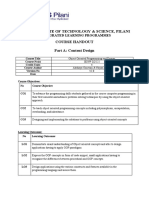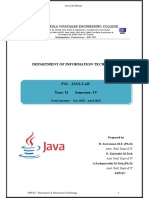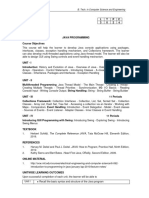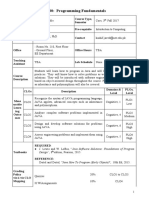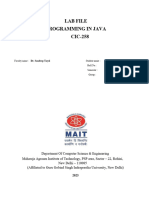0% found this document useful (0 votes)
148 views1 pageJava Prog Sem-3
The document outlines the objectives, outcomes and Bloom's Taxonomy levels of a Java Lab course. The objectives are to understand OOP concepts in Java, classes, objects, inheritance, interfaces, packages, exception handling, multithreading and developing GUIs. The outcomes are being able to explain Java concepts, apply OOP principles, demonstrate inheritance and interfaces, handle exceptions and files, and design GUIs using Swings, AWT and JavaFX.
Uploaded by
Nitish JhaCopyright
© © All Rights Reserved
We take content rights seriously. If you suspect this is your content, claim it here.
Available Formats
Download as DOCX, PDF, TXT or read online on Scribd
0% found this document useful (0 votes)
148 views1 pageJava Prog Sem-3
The document outlines the objectives, outcomes and Bloom's Taxonomy levels of a Java Lab course. The objectives are to understand OOP concepts in Java, classes, objects, inheritance, interfaces, packages, exception handling, multithreading and developing GUIs. The outcomes are being able to explain Java concepts, apply OOP principles, demonstrate inheritance and interfaces, handle exceptions and files, and design GUIs using Swings, AWT and JavaFX.
Uploaded by
Nitish JhaCopyright
© © All Rights Reserved
We take content rights seriously. If you suspect this is your content, claim it here.
Available Formats
Download as DOCX, PDF, TXT or read online on Scribd
/ 1


























